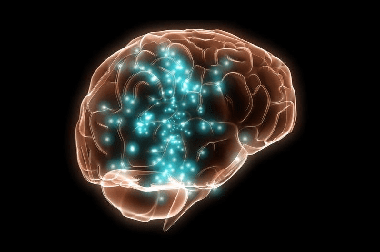Neurological diseases >>>> Aphasia
Aphasia.

Aphasia - this is one of the types of disorder of already formed speech, which manifests itself in a violation of the ability to use words to express their thoughts due to damage to the parts of the brain responsible for speech. A person suffering from aphasia cannot transform a speech impulse into speech, but the peripheral apparatus of speech (muscles and nerve endings) continues to function correctly, and in some cases a person uses separate words (correctly pronounced) to characterize an object or action. Aphasia can manifest itself in impaired speech formation, but with understanding of oral speech, as well as in impaired understanding of speech, but the ability to pronounce words and form phrases is not lost.
Aphasia can be accompanied by a loss of the ability to sound and / or letter analysis of the word, which leads to other disorders: dyslexia (impaired reading of words) and / or dysgraphia (impaired spelling of words).
The provoking factors and causes of aphasia are varied:
The severity of aphasia depends on the location of the affected area of the brain, the extent of the affected area, on the rate of development (speech disorders increase gradually or sharply), on the patient's age and compensatory functions of the body.
A classification of varieties of aphasia manifestation has been developed, which allows one to diagnose aphasia depending on the signs of its manifestation and areas of brain damage, as well as to choose the appropriate treatment:
- Efferent motor aphasia is associated with damage to Broca's area (lower parts of the premotor region). This type of aphasia is characterized by a violation of switching from one articular position to another when pronouncing a word. At the same time, a person suffering from this type of aphasia can rearrange syllables and sounds. His rhythm and melodic sound of speech are disturbed.
- Afferent motor aphasia is associated with damage to the inferior parietal and postcentral parts of the cortex, and manifests itself in the difficulty of choosing an articular position when pronouncing a sound. In a patient with this type of aphasia, spontaneous speech is impaired, phonemic hearing may be impaired, which may result in difficulties in understanding spoken language.
- Acoustic-gnostic sensory aphasia develops when Wernicke's zone is affected (areas of the posterior third of the temporal gyrus of the right or left hemisphere, depending on whether a person is left-handed or right-handed). At the same time, the analysis of speech and its synthesis, phonemic hearing are disturbed and, as a result, the understanding of the speech of others is lost and the own flow of words is not controlled.
- Acoustic-mnestic aphasia occurs when the temporal region is affected. Such patients do not remember well the information perceived by ear, they cannot repeat the bundles of three or four words, they do not grasp the meaning of a long speech or a conversation of several interlocutors. Suffering from this type of aphasia, the connection between the word and the visual image of the object is weakened.
- Semantic aphasia is the result of damage to the overlap zone of the temporal, parietal and occipital cortex. The patient forgets the names of phenomena, objects, actions, does not assimilate complex semantic and grammatical constructions, cause-and-effect relationships, does not understand the read text.
- Dynamic aphasia is the result of damage to the posterior forehead. In this case, the patient pronounces sounds, words and short phrases correctly, but spontaneous speech is impossible, and speech turns are automatic. The ability to count, read and write is not lost.
Aphasia is diagnosed using hardware studies (ultrasound, MRI, ultrasound, Doppler ultrasonography of the cerebral vessels). Diagnostics of the nature of oral and written speech, reading, auditory and visual memory.
Treatment of aphasia is based on the correction of speech function with the participation of a speech therapist and observation by a neurologist. In some cases, neurosurgical intervention is performed (for example, to remove a tumor, hematomas , stop bleeding). The earlier the causes of aphasia are established and treatment begins, the more favorable the prognosis. The exception is irreversible changes in brain tissue.

Read

Read


























